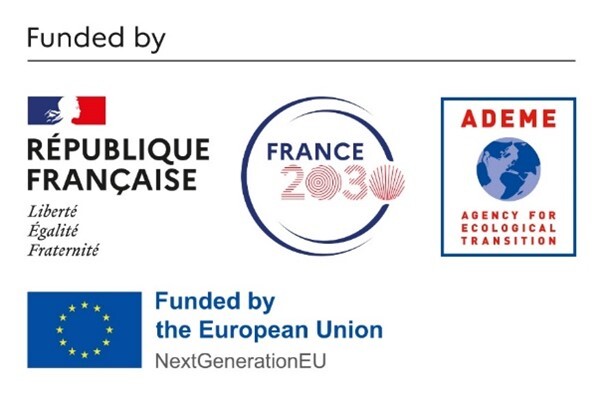Arkema, an innovative global chemical player, is pouring €130 million ($136.3 million) into its acrylic monomer facility in Carling, France, to significantly reduce its carbon footprint by 2025. The move involves introducing a patented solvent-free purification technology, which promises to slash the site’s carbon dioxide emissions by over 20 percent – a reduction of 300 kilotons. Such a drastic cut aligns with Arkema’s aim to help limit global temperature rise to only 1.5°C above what it was before the industrial era by the year 2030. This goal is validated by the Science Based Target Initiative (SBTi), which ensures that companies set carbon reduction goals that align with what scientific research says is necessary to combat climate change.
Bridging technology with sustainability, Richard Jenkins, Senior Vice-President of Coating Solutions at Arkema, shed light on this new technology, saying, “It allows us to enhance both our environmental footprint and operational excellence while advancing decarbonization and fulfilling our overall climate strategy.”
With a strong foothold in advanced materials, Arkema has continuously showcased its commitment to pioneering innovative solutions, particularly in 3D printing. In fact, his investment in sustainability aligns with Arkema’s broader commitment to eco-conscious innovation, evident in the group’s mission to facilitate the adoption of 3D printing technology with Advanced Bio-Circular (ABC) materials.
Inside the investment
Located in Carling, Arkema’s facility stands out as one of Europe’s premier acrylic plants, producing monomers essential for various industries, from electronics to EV batteries. The plan is to transition to the new technology by 2026, with employees poised to ensure the project’s smooth execution.
Echoing the company’s aspirations, “This investment at the Carling facility represents our strong and long-term dedication to aiding our customers in their growth and sustainability journey. Following our launch of bio-based acrylic monomers in 2022, we’re positioned to lead in the low-carbon acrylic materials sector,” commented Jenkins.
Arkema’s investment goes beyond just cutting carbon. It includes better resource use, improved waste handling, and an increased production capacity. Delving deeper into their strategic endeavors, this move fits into Arkema’s bigger plan, which focuses on new transport projects, helping communities, and pushing for more energy-efficient building constructions. Moreover, this ambitious project has garnered support, receiving partial funding from the French State – via the France 2030 program managed by the Agency for the Environment and Energy Management (ADEME) – and the European Union’s NextGenerationEU initiative.
Bigger picture
Arkema’s endeavors extend beyond this single project. The company is working on many green projects, such as ramping up the production of biobased materials, including making more materials from plants and increasing eco-friendly fuel production.
When 3DPrint.com asked about this, Jenkins explained, “There’s the Mass Balance approach and the segregated bio-renewable approach, and we’re keen on both. The former aids the transition from a fossil-based system, granting all stages in the value chain access to renewable feedstocks and drop-in solutions with a smaller carbon footprint.”
On balancing traditional and bio-acrylics, Jenkins stressed the importance of starting with material science. “The downstream is only as green as the upstream,” he remarked, emphasizing the significance of informed choices at every stage.
Building on that sentiment, Arkema’s initiatives are creating ripples. Understanding that a large chunk (typically 70-90%) of a customer’s “Scope 3” emissions originates from their upstream raw material supply, Arkema’s emission reduction initiatives are not just for them but also crucial for their customers’ sustainability objectives. Jenkins says they continually work with customers and other companies across the value chain to identify new ways to address various sustainability challenges.
“The acrylic value chain is complex, with varied needs depending on where you are in the chain. The momentum varies by geography. While it may not be fully visible to the consumer, what we do as Arkema enables the sustainability transformation the world seeks – something that has to begin with material science,” explains Jenkins. “Our approach is to offer a range of possibilities and allow the market to pull on the solutions that best fit their needs. For downstream consumer products to become truly sustainable (or “green”), we have to start by driving a more sustainable lifestyle and informed choices. That begins with companies like Arkema offering the right upstream material science options.”
Zooming into their construction-related endeavors, for example, Jenkins indicated that the building industry, in particular, accounts for 30 percent of carbon dioxide emissions worldwide – from construction to energy used during the life of the building.
“This is something we are actively working to change,” he explains. “We have a number of use examples that help demonstrate ‘what it is’ versus ‘what it does.’ In cool surfaces application, Arkema offers technology that reduces operational CO2 from energy consumption by keeping buildings cooler and reducing energy load for air-conditioning.”
Arkema products are used throughout home construction, including sealing, bonding, protecting, and beautifying. All areas where it is actively offering existing and exploring new renewable material streams, as well as looking for ways to be more energy efficient.
Subscribe to Our Email Newsletter
Stay up-to-date on all the latest news from the 3D printing industry and receive information and offers from third party vendors.
You May Also Like
Further Understanding of 3D Printing Design at ADDITIV Design World
ADDITIV is back once again! This time, the virtual platform for additive manufacturing will be holding the first-ever edition of ADDITIV Design World on May 23rd from 9:00 AM –...
3D Printer Maker EVO-tech Reborn as NEVO3D — Once More With Feeling
EVO-tech was a 3D printing service and original equipment manufacturer established in 2013 and based in Schörfling am Attersee, Austria. The company produced high-quality material extrusion systems featuring linear bearings,...
3D Systems Brings 3D Printed PEEK Cranial Implant to the U.S. with FDA Clearance
For more than 10 years, 3D Systems (NYSE:DDD) has worked hand-in-hand with surgeons to plan over 150,000 patient-specific cases, and develop more than two million instruments and implants from its...
CDFAM Returns to Berlin for Second Annual Symposium
The second CDFAM Computational Design Symposium is scheduled for May 7-8, 2024, in Berlin, and will convene leading experts in computational design across all scales. Building upon the first event...


































